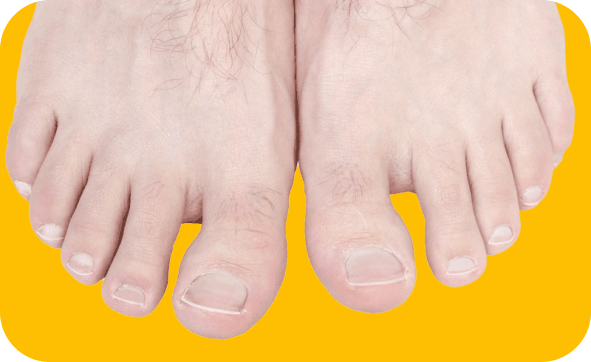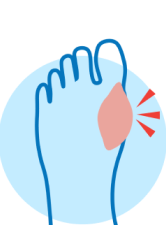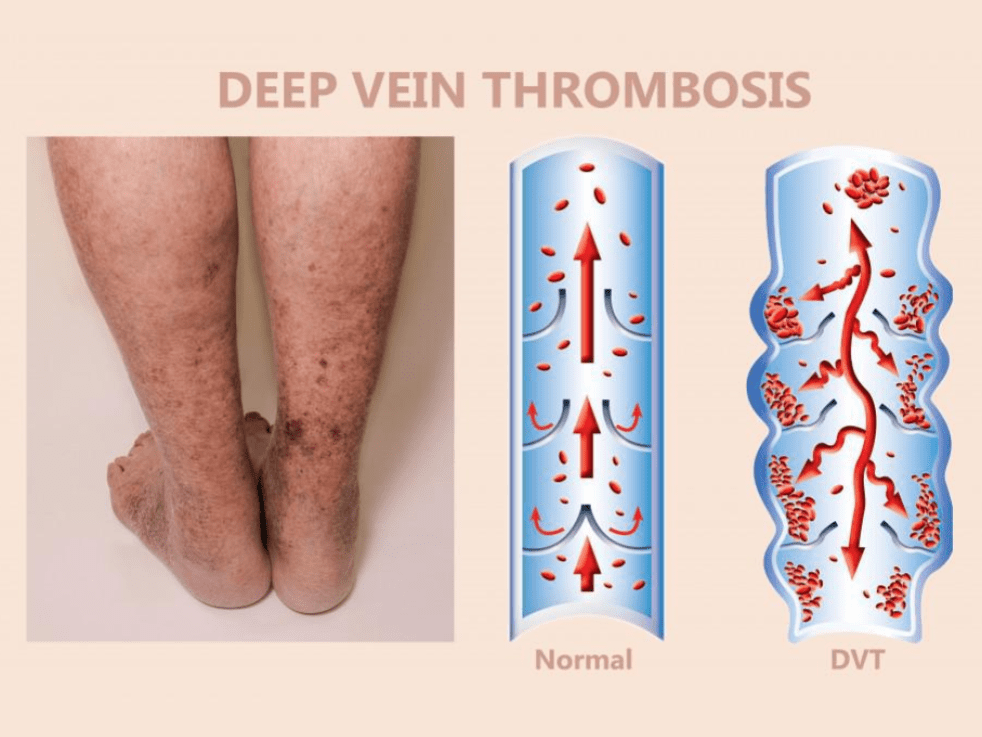Toe Conditions

Toe Conditions
The toes take up a very small part of the body, but they can make a huge difference in an individual’s life. When dealing with a toe condition, it can not only limit physical activity but also affect a person’s willingness to show their toes in public. Some toe conditions may start as a minor inconvenience, but they can quickly escalate into a significant medical problem if left unaddressed. StrideCare’s expert podiatry specialists are here to provide comprehensive care, offering both conservative and surgical treatment options as necessary. StrideCare’s specialists are eager to discuss patients’ unique needs and prepare the best plan of action to get them back on their feet.
Which Toe Conditions Can Be Treated at StrideCare?

Gout
- Obesity
- Dehydration
- Family history
- Diabetes
- Chemotherapy
- High blood pressure
- Poor kidney function
- Certain medications, including diuretics
- Non-steroidal anti-inflammatory drugs (NSAIDs)
- Uric acid-lowering medications
- Prescription painkillers
- Steroid medications

Hammertoe
- Rigid toe joint
- Limited toe mobility
- Corns or callused skin
-
Pain in affected toes and foot
- Swelling in toes and surrounding tissues
If you have hammertoes, you should seek treatment to avoid long-term complications and worsening foot pain. Initial treatment options are conservative and include specialized padding/taping/splints, anti-inflammatory medications, topical creams, custom orthotics, steroid injections, and/or physical therapy. If those treatments don’t help or your condition is too progressed, surgery may be the best option.

Ingrown Toenail
- Redness, heat, and swelling
- Tenderness or throbbing pain
- Drainage from the nail border
- Discoloration of the nail
-
Pain when wearing shoes
- Discomfort when bearing weight on the toe
If left untreated, eventually the nail becomes embedded in the skin and can lead to infection. An untreated infection could spread to the tissues and bones of the foot and leg and eventually your bloodstream.
If you are experiencing any of the symptoms, please seek treatment, as the severity of an ingrown toenail can progress quickly. Treatment options include oral antibiotics, topical antibiotics, toenail splint, and/or partial/complete removal of the nail—all of which can be performed in the office.

Toenail Fungus
- Cutting nails/cuticles too short
- Sweating heavily
- Having poor hygiene
-
Having an open injury on your foot
- Having diabetes or circulation problems
- Having a history of athlete’s foot or other fungal infection
- Walking barefoot in public areas, like locker rooms, playgrounds, or pools
- Sharing socks or shoes, especially for children and teens
- Having a suppressed immune system
- Using shared pedicure tools that aren’t cleaned properly
Toenail fungus may not be painful, but you should see a podiatrist if you notice:
- Discoloration or yellowing
- Brittleness or crumbling
-
Thickening or loosening
- Debris under the nail
Toenail fungus can spread to other toenails or other people, so be sure to get treatment, if you suspect you may have symptoms. Treatments include laser therapy, antifungal soap, medications, and nail debridement. Severe and recurrent cases may require surgical removal of the nail.
StrideCare
Patient Reviews



4.89 Average Online Review Score












StrideCare Leverages athenaOne to Enhance Financial and Operational Results, Improve Clinical Workflows
2 Min Read CASE STUDY: Transitioning all practices onto one united system gives StrideCare invaluable access to data

When are Varicose Veins More than Just a Cosmetic Concern?
2 Min Read Learn about varicose veins, prevention tips, and treatment options from StrideCare’s vein specialists in Texas.

Puffy Legs are One of the First Signs of Deep Vein Thrombosis
3 Min Read Learn the symptoms of deep vein thrombosis (DVT) and seek immediate evaluation at StrideCare for expert care and treatment.


